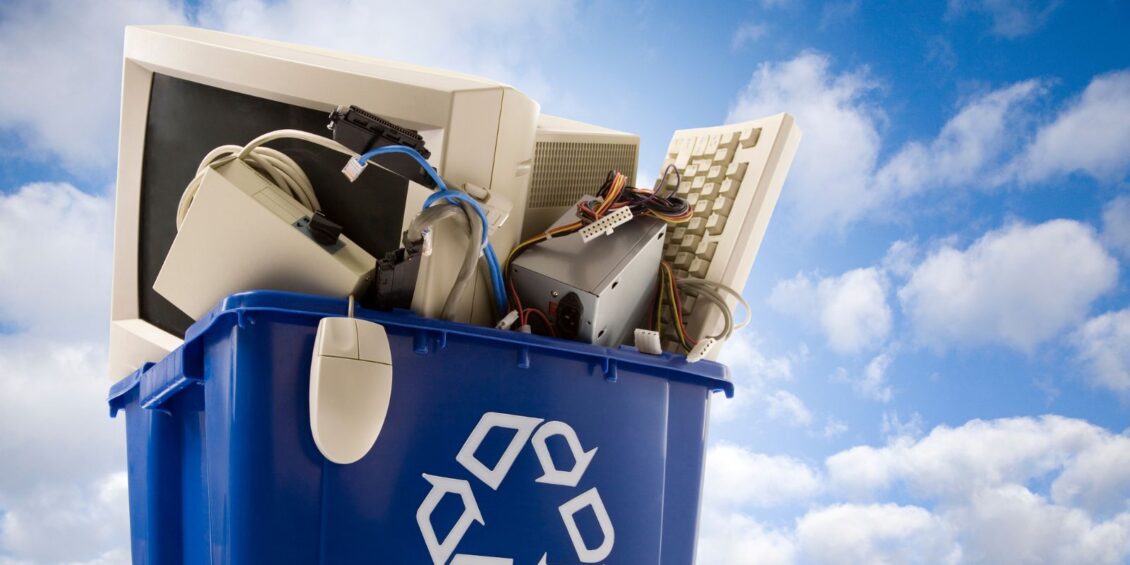In today’s rapidly evolving technological landscape, the lifespan of electronic devices, including computers, is becoming increasingly shorter. As a result, the proper disposal of old computers has become a critical issue, with environmental and data security concerns at the forefront. In this comprehensive guide, we’ll explore the importance of sustainable computer recycling and provide actionable steps for responsibly disposing of old computers.
Understanding the Need for Sustainable Computer Recycling
The Growing Problem of E-Waste
Electronic waste, or e-waste, is one of the fastest-growing waste streams globally. According to the Global E-waste Statistics Partnership, approximately 53.6 million metric tons of e-waste was generated worldwide in 2019, with only a fraction of it being recycled. E-waste poses significant environmental and health hazards due to the presence of toxic substances such as lead, mercury, cadmium, and brominated flame retardants.
Environmental Impact of Improper Disposal
When old computers are improperly disposed of in landfills or incinerated, they can release harmful chemicals and heavy metals into the air, soil, and water. This pollution can contaminate ecosystems, harm wildlife, and pose risks to human health. Additionally, the energy-intensive manufacturing processes required to produce new computers contribute to carbon emissions and resource depletion, further exacerbating environmental problems.
The Benefits of Sustainable Computer Recycling
Conservation of Resources
Sustainable computer recycling near me helps conserve valuable natural resources by recovering and reusing materials from old computers. Components such as metals, plastics, and glass can be extracted and repurposed in the manufacturing of new products, reducing the need for virgin materials. By extending the lifecycle of electronic devices through recycling, we can minimize resource extraction and alleviate pressure on finite resources.
Energy Savings
Recycling old computers also saves energy compared to producing new ones from raw materials. Manufacturing electronic devices requires significant amounts of energy, primarily from non-renewable sources such as fossil fuels. By recycling materials from old computers, we can reduce the energy consumption associated with extraction, processing, and manufacturing, thereby lowering greenhouse gas emissions and mitigating climate change.
Steps for Responsible Computer Recycling
Step 1: Data Backup and Data Destruction
Before recycling laptop, it’s essential to back up any important data stored on the device. Transfer files, documents, photos, and other valuable information to an external hard drive, cloud storage, or another computer to ensure they’re not lost during the recycling process.
Once you’ve backed up your data, it’s crucial to securely erase any remaining information from the hard drive or storage device. Use data wiping software or physical destruction methods such as degaussing or shredding to ensure that sensitive data cannot be recovered by unauthorized individuals.
Step 2: Find a Reputable Recycling Facility
When choosing a recycling facility for your old computer, look for reputable e-waste recyclers that adhere to environmental and ethical standards. Verify that the facility is certified by organizations such as the Responsible Recycling (R2) or e-Stewards, which set rigorous criteria for responsible e-waste management.
Ensure that the recycling facility has proper licenses and permits for handling electronic waste and follows environmentally sound practices for recycling and disposal. Transparency and accountability are essential factors to consider when selecting a recycling partner.
Step 3: Prepare Your Computer for Recycling
Before handing over your old computer to the recycling facility, take steps to prepare it for recycling. Remove any peripherals, cables, or accessories attached to the computer, including keyboards, mice, and monitors. Separate components that can be recycled, such as metal chassis, plastic casings, and circuit boards, to facilitate the recycling process.
Step 4: Drop Off or Arrange for Pickup
Once your old computer is ready for recycling, you can either drop it off at the recycling facility or arrange for pickup, depending on the options provided by the recycler. Many recycling facilities offer convenient drop-off locations or scheduled pickup services to accommodate customers.
If you’re dropping off your computer in person, ensure that you follow any instructions provided by the recycling facility regarding packaging, labeling, or documentation requirements. Provide any necessary information, such as proof of ownership or data destruction certification, to facilitate the recycling process.
Step 5: Track the Recycling Process
After handing over your old computer to the recycling facility, inquire about the recycling process and how the materials will be handled. Some recyclers provide certificates of recycling or documentation that attest to the proper disposal of electronic waste, including data destruction and recycling compliance.
If possible, track the recycling process to ensure that your old computer is processed responsibly and in accordance with environmental regulations. Transparency and accountability are essential for building trust and confidence in the recycling process.
Conclusion
Sustainable computer recycling is essential for mitigating the environmental and social impacts of electronic waste. By responsibly disposing of old computers, we can conserve resources, reduce energy consumption, and prevent pollution. Follow the steps outlined in this guide to ensure that your old computer is recycled in an environmentally sound and ethical manner. Together, we can work towards a more sustainable future where electronic waste is minimized, and resources are reused and recycled for generations to come.









Leave a Reply
View Comments